Part Three of a Five-Part Series on Sports Nutrition
On product labels, in testimonials and in marketing literature, we often see phrases like, “…for the active lifestyle.” It’s trendy marketing vernacular, sure, but when it comes to sports nutrition foods and beverages, it rings true: the consumer base for these products is indeed active, and it needs products to support that lifestyle.
Consumers that buy these products, from energy bars to protein powders to functional drinks, are either looking to train seriously as athletes or to squeeze every last ounce of energy and productivity that they can into their free time between family and professional responsibilities. For better or worse, many consumers look at the products we’ll learn about here as their golden ticket to success in such endeavors. Which products come closest to meeting those expectations, and why? And in a dynamic market like sports nutrition, what does the present and future hold for natural options?
Protein for All
The steady demand for protein-rich, protein-enhanced or just straight protein products won’t change any time soon. Understanding the different sources of protein and what they bring to the table for your customers can therefore be a valuable tool. But before we get to specific sources, Neil E. Levin, CCN, DANLA, nutrition education manager for NOW Foods, Bloomingdale, IL, wants you to understand that essential amino acid content, delivered in the right proportions, is what makes a good, complete source of protein.
One key benefit of using multiple or blended 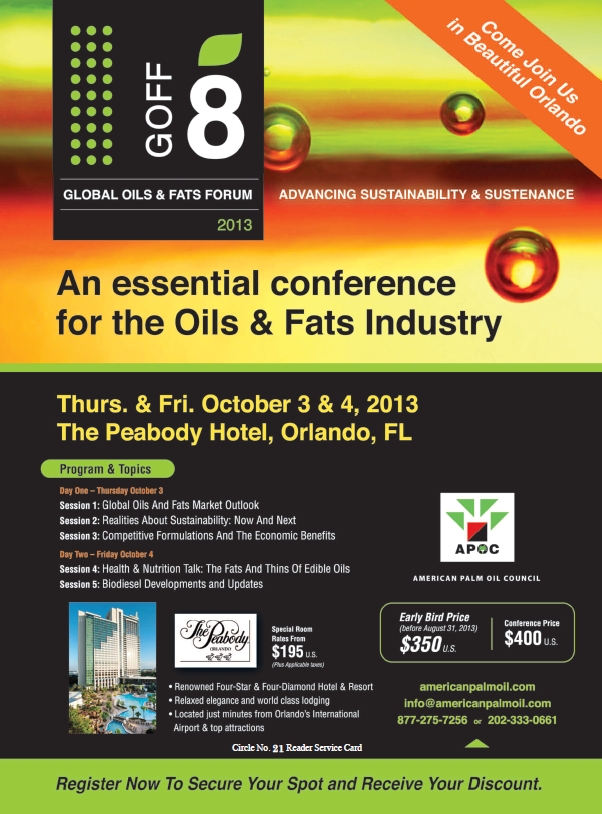 sources of protein, says Emma Cutfield, RHN, education team manager for Vega, Burnaby, BC, Canada, is the ability to achieve a balanced amino acid profile. “When the unique amino acid profiles of each protein source complement one another, it results in a stronger overall amino acid yield,” she says.
sources of protein, says Emma Cutfield, RHN, education team manager for Vega, Burnaby, BC, Canada, is the ability to achieve a balanced amino acid profile. “When the unique amino acid profiles of each protein source complement one another, it results in a stronger overall amino acid yield,” she says.
Some of your customers might wonder how much delivery format matters when it comes to protein. Trisha Sugarek MacDonald, B.S., M.S., director of R&D and national educator for Bluebonnet Nutrition Corp., Sugar Land, TX, says that powder and liquid forms share some distinct advantages over capsules, tablets and whole food sources. Areas like assimilation, transit time, taste, convenience (no blender needed) and ease of intake are all positives associated with powders, she says. “With a powdered formula, the amount of time it takes the nutrients to go from the stomach to the small intestine for absorption is miniscule,” Sugarek MacDonald says. But powders are often subject to a shorter shelf life, and they must be mixed with liquid, whereas ready-made liquid protein products offer the highest level of convenience.
Levin notes that companies may offer protein products from several sources, due to the unique attributes of different sources and to cater to specific dietary restrictions.
The most common sources for plant-based protein powders, according to Cutfield, include yellow or green pea, sprouted brown rice, Peruvian sacha inchi seed, alfalfa and hemp. A switch to plant-based protein may benefit consumers that have difficulty digesting protein from other sources, typically dairy, according to Cutfield. “Impaired digestion also affects nutrient absorption, decreasing the usability of amino acids absorbed from the protein,” she says. Long-term, proteins from plants also help to alkalize the body’s pH balance, an important factor for preventing the buildup of lactic acid in athletes.
Tryptophan, an amino acid found in high levels in sacha inchi seed, is a precursor to serotonin. “If an athlete is noticing a decrease in motivation, it’s important to maintain nutritional support for the production of neurotransmitters, such as serotonin, to keep the drive alive!” Cutfield says.
 Another amino acid, glutamine, is considered a nonessential amino acid (the body synthesizes it on its own) that can nevertheless become deficient during times of stress. Athletes, Cutfield points out, are exposed to both physical and mental stress, so supplementing with protein sources high in glutamine, such as pea protein, may help reduce recovery time between training sessions and assist in muscle repair.
Another amino acid, glutamine, is considered a nonessential amino acid (the body synthesizes it on its own) that can nevertheless become deficient during times of stress. Athletes, Cutfield points out, are exposed to both physical and mental stress, so supplementing with protein sources high in glutamine, such as pea protein, may help reduce recovery time between training sessions and assist in muscle repair.
Branched-chain amino acids (BCAAs) like isoleucine, leucine and valine help trigger the body’s transition from catabolism to anabolism after exercise, meaning that protein synthesis, muscle tissue repair and muscle tissue rebuilding begin sooner. Hemp, Cutfield says, is a good plant-based source of BCAAs.
Levin calls soy a great vegetarian protein source, and despite some conflicting opinions, he says that soy from foods has been deemed safe for women with breast cancer and for men as well (1). In fact, soy protein is rich in isoflavones, which Sugarek MacDonald says act as phytoestrogens to help support the health of menopausal women and prostate health in men. Soy isoflavones also offer antioxidant protection and bone support, in addition to well-established cardiovascular benefits.
For those who have soy allergies or who might be negatively impacted by phytoestrogens, Sugarek MacDonald suggests cranberry or sweet potato as sources of protein. One may have to eat more of them to get the same amounts of protein, and bodybuilders may stay away from the extra carbohydrates, but she says sources like these can provide runners or endurance athletes with a good nutritional complement.
Just like soy and other plant-based proteins, rice protein may 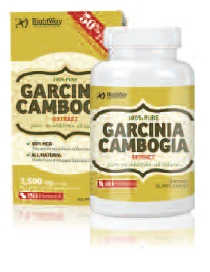 contain beneficial phytochemicals that animal sources do not, according to Scarlett Blandon, M.S., RDN, director of nutrition and research for Axiom Foods, Los Angeles, CA. She also explains that rice protein contains an alternative range of amino acids to that offered by other sources. Typically, she says, rice protein offers 8–9% leucine, 8–9% arginine and 18–19% other BCAAs, which she says is more arginine than whey protein typically offers, and slightly more of each category than soy. Leucine plays a key role in muscle protein synthesis, arginine helps the body to produce vasodilating nitric oxide and BCAAs help to fuel muscle tissue, according to Blandon.
contain beneficial phytochemicals that animal sources do not, according to Scarlett Blandon, M.S., RDN, director of nutrition and research for Axiom Foods, Los Angeles, CA. She also explains that rice protein contains an alternative range of amino acids to that offered by other sources. Typically, she says, rice protein offers 8–9% leucine, 8–9% arginine and 18–19% other BCAAs, which she says is more arginine than whey protein typically offers, and slightly more of each category than soy. Leucine plays a key role in muscle protein synthesis, arginine helps the body to produce vasodilating nitric oxide and BCAAs help to fuel muscle tissue, according to Blandon.
Preliminary research on rice protein for sports nutrition has shown that its rate of digestion is “intermediate,” between that of whey and casein, she says. Therefore, when blended with other protein sources such as whey, rice protein may induce prolonged muscle protein synthesis by extending the release of amino acids. In addition, a double-blind study on trained athletes found that rice protein “is comparable to whey at promoting significant gains in muscle mass, total body strength and power,” says Blandon (2).
Whey protein, derived from milk, is a fast-acting protein that can be called “the king of nutrients for bodybuilders or those interested in building up their muscle mass for a more toned look,” says Sugarek MacDonald. She says that whey, unlike casein, has a quick, major and transient impact on protein metabolism after ingestion, earning it the moniker of a fast-acting protein. “The amino acids derived from whey are typically associated with protein synthesis and oxidation and not in the inhibition of protein breakdown—so it’s great for muscle building, but not repair,” she says.
Manufacturing processes that produce protein isolates increase the protein per gram in a product, while special filtration processes like that used by Sugarek MacDonald’s company remove unneeded fat and lactose without affecting the protein’s quality. Levin says these manufacturing processes make use of low temperatures to prevent the denaturing of whey protein and to maintain the immune health benefits it can provide.
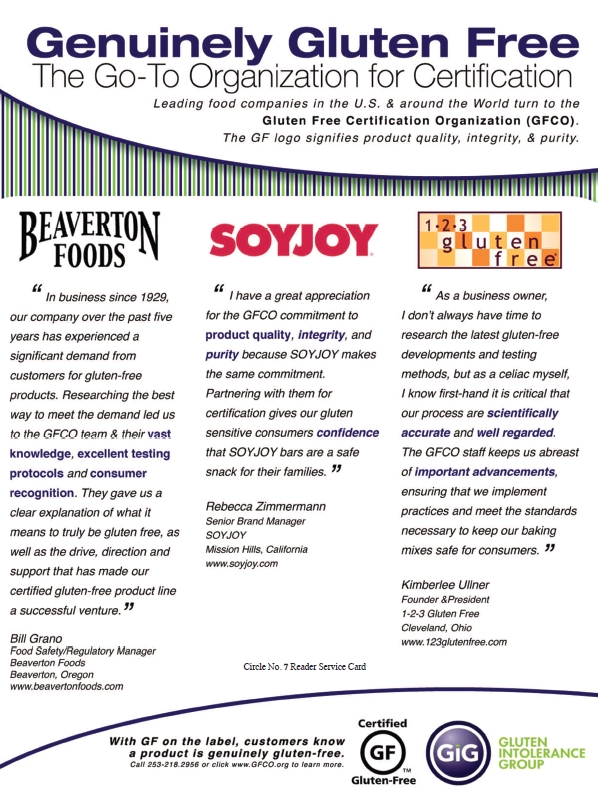 Another similar option is goat milk protein, which contains all of the essential amino acids, says Joe Stout, M.S., president of Mt. Capra Wholefood Nutritionals, Chehalis, WA. Citing allergy issues and the shortcomings of other protein sources, Stout says that goat milk protein is desirable for its high digestibility and bioavailability. “The two forms of protein within goat milk are whey protein and casein protein. The casein protein in goat milk does not contain any of the allergen alpha S1 casein that causes many to react to cow protein,” he says.
Another similar option is goat milk protein, which contains all of the essential amino acids, says Joe Stout, M.S., president of Mt. Capra Wholefood Nutritionals, Chehalis, WA. Citing allergy issues and the shortcomings of other protein sources, Stout says that goat milk protein is desirable for its high digestibility and bioavailability. “The two forms of protein within goat milk are whey protein and casein protein. The casein protein in goat milk does not contain any of the allergen alpha S1 casein that causes many to react to cow protein,” he says.
The whey and casein protein found in goat milk and other sources perform different functions. Whey protein, Stout confirms, successfully stimulates protein synthesis. Casein, on the other hand, helps inhibit proteolysis, or the breakdown of protein and therefore muscle. He suggests that while whole protein products can serve well for most athletes, a bodybuilder, for example, may want to supplement with a whey protein pre-workout, and with casein post-workout.
Finally, Levin also suggests eggwhite protein because it is easily utilized by the body and low in fat and carbohydrates. It doesn’t necessarily taste the best, but companies like his have worked on making it more palatable in finished products.
Energy the Natural Way
The mainstream energy drink business has been subjected to a flood of high-profile criticism. From safety questions to the related issue of misleading labels, many parties including lawmakers and consumers have reexamined their stance on the category. Where has that left natural, less-stimulant intensive options in the energy drink market? Shots, gels and drinks that only use natural ingredients, instead of artificial stimulants and sugars, may be edging their way toward the center while the big guys are under fire.
“We have received tremendous goodwill from the negative press around energy drinks,” says Scott Lerner, CEO and founder of Solixir, Evanston, IL. In fact, it has correlated with a sales uptick, says Lerner, and companies like his have seized on the opportunity to accelerate their marketing, using mainstream energy drinks like Red Bull as a foil to the simple ingredient lists of their products.
In some ways, though, the critical attention to the category has had a net  negative impact, says Robert Portman, Ph.D., author and co-founder of Pacific Health Laboratories, makers of Body Glove SURGE from Body Glove, Redondo Beach, CA. “For example, although the energy shot category, which is dominated by 5-hour Energy, continues to grow, it is at a slower rate. Much of the criticism of these products is due to the enormous amount of advertising directed toward children and young adults,” he says.
negative impact, says Robert Portman, Ph.D., author and co-founder of Pacific Health Laboratories, makers of Body Glove SURGE from Body Glove, Redondo Beach, CA. “For example, although the energy shot category, which is dominated by 5-hour Energy, continues to grow, it is at a slower rate. Much of the criticism of these products is due to the enormous amount of advertising directed toward children and young adults,” he says.
Lawmakers are also concerned with the amounts of caffeine in energy drinks, according to Bill McKay, CEO and founder of Ecosentials LLC, Phoenix, AZ, makers of Vitamin Squeeze. Consumers are waking up to the risks of these products, says Tom Morse, president of Rushmore Essentials, Dana Point, CA, and the Federal Trade Commission and FDA are playing a role in this consumer reeducation. “The reality is that traditional energy drinks and shots are more akin to combination drugs, not supplements; the chemicals and stimulants can be harmful and cause real stress on the heart and body,” says Morse.
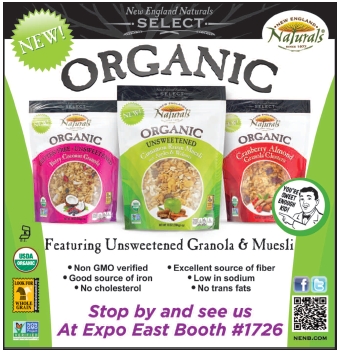 Natural options provide a counterpoint to these issues, in product formulation and sometimes in effectiveness. Angeles Burke, director of fitness and wellness at Celsius, Boca Raton, FL, describes the way her company positions its product as an alternative. With no sugar and low sodium content, the drink contains a combination of nutrients including “green tea extract, ginger root, guarana, B-vitamins and caffeine to give the consumer a boost of energy without a jittery feeling,” Burke says.
Natural options provide a counterpoint to these issues, in product formulation and sometimes in effectiveness. Angeles Burke, director of fitness and wellness at Celsius, Boca Raton, FL, describes the way her company positions its product as an alternative. With no sugar and low sodium content, the drink contains a combination of nutrients including “green tea extract, ginger root, guarana, B-vitamins and caffeine to give the consumer a boost of energy without a jittery feeling,” Burke says.
On top of the preferability of natural ingredients and a lack of jitters, Portman explains how natural energy options can actually outperform their big brand counterparts in terms of athletic goals. He says, “Researchers led by Dr. John Seifert from Montana State University just presented a new study at the 2013 annual meeting of the American College of Sports Medicine comparing the effectiveness of energy shots. They found that an all-natural combination of caffeine, protein and carbohydrates significantly outperformed the chemical caffeine formulation in terms of extended endurance, faster reaction times and enhanced mental concentration.”
All in all, “I think you can look at the upward trend in the natural marketplace overall and correctly infer consumers want healthier alternatives,” McKay says. Endurance athletes, in particular, Morse believes, are realizing that they can achieve muscle recovery and stamina from the real nutrients that come in natural products.
Portman agrees, stating that a new category 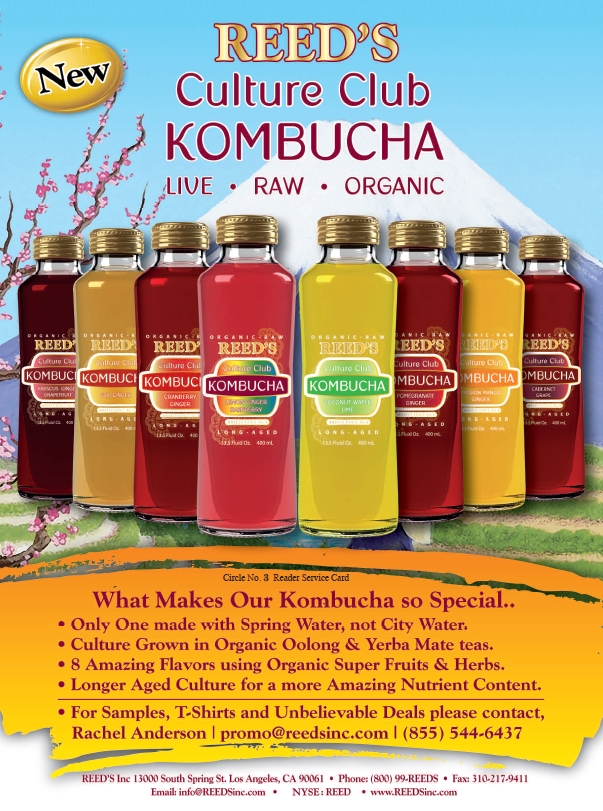 of energy shot products has emerged that is aimed at those he terms “seekers of health lifestyle.” This consumer demand for healthy energy products has been identified for years in market research, and many of these consumers are heavy users of caffeine, whether it is from green tea or coffee, Portman says. “The problem is the current category of energy shots, with their chemical ingredients, are simply unappealing and regarded as unhealthy,” Portman says. This is the space that all-natural energy products, such as his company’s, which utilizes green tea, protein, honey, coconut water and pomegranate as ingredients, can begin to fill.
of energy shot products has emerged that is aimed at those he terms “seekers of health lifestyle.” This consumer demand for healthy energy products has been identified for years in market research, and many of these consumers are heavy users of caffeine, whether it is from green tea or coffee, Portman says. “The problem is the current category of energy shots, with their chemical ingredients, are simply unappealing and regarded as unhealthy,” Portman says. This is the space that all-natural energy products, such as his company’s, which utilizes green tea, protein, honey, coconut water and pomegranate as ingredients, can begin to fill.
Janie Hoffman, CEO of Mamma Chia, Bonsall, CA, also points to the organic chia seeds, fruits and vegetables comprising her company’s products as an example of the trend, and summarizes by saying, “It is clear the tides are changing in the energy drink market as consumers seek more natural and organic sources of energy. This shift is certainly exciting for companies that are committed to natural and organic foods and beverages and believers in their benefits.”
Electrolytes and You
As opposed to energy drinks, sports drinks like Gatorade, Powerade and others are primarily geared toward hydration and the replenishment of electrolytes. There may be some crossover between the two categories, where hydrating sports drinks will include nutrients like B vitamins to provide an energy boost. But for the most part, the goal of a sports drink is to keep athletes in the game through the wonder of proper hydration.
Electrolytes, says McKay, are some of the most important elements in the human body. “They carry out many of your basic functions, such as the regulation of nerves and muscles and the maintenance of acid-base balance. This occurs at the cellular level,” he says. Sodium, potassium and chloride are three 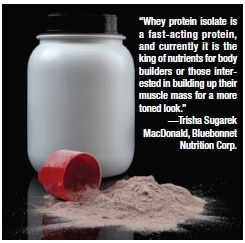 of the most commonly occurring electrolytes in the body. According to McKay, each carries an electrical charge that helps maintain normal fluid levels by allowing signals to flow throughout the body; chloride is of particular importance in maintaining this balance. The body moves electrolytes in and out of cells as needed, and the kidneys excrete any excess. Importantly for endurance athletes, electrolyte balance is key to avoiding dehydration, he says.
of the most commonly occurring electrolytes in the body. According to McKay, each carries an electrical charge that helps maintain normal fluid levels by allowing signals to flow throughout the body; chloride is of particular importance in maintaining this balance. The body moves electrolytes in and out of cells as needed, and the kidneys excrete any excess. Importantly for endurance athletes, electrolyte balance is key to avoiding dehydration, he says.
In addition to electrolytes in various forms, including salt, the major sports drinks like Gatorade and Powerade contain sucrose, glucose-fructose, high-fructose corn syrup and maltodextrin. “While they do provide important electrolytes, they still are not the best choice when it comes to hydration, especially after racing or training,” McKay says. This is because those salts and sugars add up quickly with consumption. They are not a proper substitute for water, and this is why he recommends at least two eight-ounce glasses of water at the start of the day, and eight glasses total throughout the day.
Traditional sports drinks also usually contain artificial colors and other synthetic substances, and he therefore recommends hydration drinks that make primary use of natural ingredients and vitamins, without the sugar, artificial sweeteners or preservatives.
Going With Greens
|
What’s in a Bar? Are energy bars a dime a dozen, or worth their weight in gold? It depends on where you’re shopping, but in terms of their real value to those with active lifestyles, it depends on how they’re put together. Emma Cutfield, RHN, education team manager for Vega, Burnaby, BC, Canada, says that “nutrient density is more important than calories, as not all calories are created equal.”
As for the relationship between time of consumption and nutrient content, Cutfield says, “For energy bars that are going to be used mid-workout, look for a bar with a higher proportion of carbohydrates, without too much fiber,” as fiber can be difficult to digest while exercising. A base of dried fruits works well, along with small amounts of protein or fat from nuts or nut butters to slow the release of glucose into the bloodstream. This will help keep energy up during activities that last awhile, like hiking and biking. For those simply looking for an on-the-go snack to accompany daily activity, more protein (over 10 g, Cutfield suggests) is ideal, along with essential fats and fiber (at least 5 g). This will help keep blood sugar stable and lead to feelings of satiation. In addition, Cutfield says that low-glycemic sweeteners, like sorghum syrup or agave nectar, are preferable for on-the-go snack bars to keep sugar and calorie content in check. One specific flavor in demand right now is coconut, according to Cutfield. The combination of chocolate and coconut in one of her company’s energy bars has been well received, she says. |
|
To illustrate the power of green foods, Sylvia Ortiz, CEO of MacroLife Naturals, Inc., Culver City, CA, contrasts them with the resurgence of fruit and vegetable juicing. “Juicing is a great way to get nutrient dense veggies, fruits and enzymes. But nutrients are limited to only the fruits or vegetables used, and in most drinks, that is only five to six ingredients,” she says. Superfood powders in the green food category can provide even more, such as probiotics, and metabolic and herbal extracts that support the liver, kidneys and the body’s adrenal and endocrine systems.
“When grown and harvested properly, foods such as cereal grasses provide a naturally concentrated source of green food nutrition,” says Ron Seibold, co-founder of PINES International, Lawrence, KS. To illustrate, he explains that a rounded teaspoon of his company’s powder was found to provide more nutrition than a plateful of fresh spinach.
In terms of the energy boost athletes can expect with green foods, Seibold starts by noting that all mammals naturally consume large amounts of grasses and other dark green leafy vegetables. Breaking this dietary need down further, he says, “Vegetable fiber keeps the colon functioning properly. The chlorophyll and other green food nutrients provide exactly what is lacking nutritionally in many diets. The USDA now recommends that we consume more dark-colored vegetables than any other food.” Research has shown that dark-colored vegetables protect against many of the epidemic health conditions found with the Standard American Diet (SAD). “People who have a lifetime habit of not eating enough green foods often have more energy and better health when they increase the amount of green in their diet,” Seibold says.
Of importance to athletes is the rate at which nutrients become available to the body. “When you rehydrate raw ingredients in combination with nutrient-rich microalgaes, the body starts the digestive process in the mouth and can better utilize the complex nutrition,” Ortiz says of some superfood blends, adding, “Capsules do not provide this benefit because the enzymes in the mouth stimulate digestion.” She also cites the affordability factor when comparing the nutrition delivered by greens with a route like juicing separately bought vegetables. “Dollar for dollar, superfood blends offer much more value,” she says.
Functional Foods for Athletes
Many of the products gaining popularity with the active lifestyle set are fortified with proprietary natural ingredients that offer specific benefits. Here is how some ingredient suppliers feel about the prospects for functional foods in this category.
Ribose is an important natural compound, one that forms the backbone of the ATP molecule, according to Tom VonderBrink, president of Bioenergy Life Science, Inc., Minneapolis, MN. ATP is the body’s main energy currency, and ribose acts as the rate limiter in the ATP-rebuilding process after stores have been depleted through exercise. Ribose helps support ATP through the purine salvage pathway, which VonderBrink says is related to endurance and stamina, and through de novo purine metabolism, which is involved in recovery.
His company’s proprietary ribose ingredient is found today in rehydration beverages, energy drinks and beverages designed for pre- and post-workout. “It is very easy to incorporate into a wide variety of products,” VonderBrink says. As an example of the way innovation takes place in this arena, he adds, “The Ribose Formulation Center can help both our current and future customers find innovative ways to add ribose to their products.”
Kevin Owen, Ph.D., Nafta head of technical marketing and scientific affairs for Lonza, Inc., Allendale, NJ, says his company’s L-carnitine ingredient has seen continual growth in delivery formats, from drinks and bars to other foods, gels, shots, dissolvable strips and sprays. The role of L-carnitine in exercise recovery, fat metabolism and energy production is well known, and Owen says increasing evidence shows L-carnitine to be beneficial “for athletes, bodybuilders, the physically active and weekend warriors in regard to improved recovery from strenuous exercise, optimization of performance, and delayed onset of fatigue.”
Both the crystalline and tartrate forms of this ingredient are manufacturer friendly, according to Owen. Indeed, many of the traditional obstacles, from color to stability, are increasingly being accounted for in today’s functional ingredients. Of the L-carnitine ingredient, Owen says it is bright white, pH and heat stable, and highly water soluble. It also has the ability to form colorless solutions.
A diet, fitness and energy ingredient made from bitter orange extract has worked its way into sports beverages, shots and drink mixes, according to Bob Green, president of Nutratech, Inc., West Caldwell, NJ. More recently, it has turned up in chews and fitness bars as well. “It works by increasing thermogenesis, the natural process that increases the resting metabolic rate and the rate at which fat is released from body stores and broken down (lipolysis) to help burn calories and fat,” Green says. He also says that an important attribute of this ingredient for athletes is the sustained, safe energy it produces for hours after ingestion, due to the long half-life of the active compound p-synephrine.
While Green says there have never been any safety or efficacy challenges in incorporating this ingredient into foods and beverages, continued improvement in areas like taste and water solubility is where the future lies. WF
This sports nutrition series is sponsored by
|
Sports Nutrition Products The following sports nutrition products and ingredients are available from companies interviewed in this piece. Axiom Foods: Oryzatein Brown Rice Protein Powder, Veg-O-Tein Pea Protein Powder, Incatein Sacha Inchi Protein Powder Bioenergy Life Science, Inc.: Bioenergy Ribose Body Glove: Body Glove Surge Bluebonnet Nutrition Corp.: Extreme Edge Sports Nutrition line, protein powders Celsius: Celsius energy drink line Ecosentials, LLC: Vitamin Squeeze powder water enhancers Lonza, Inc.: Carnipure L-carnitine MacroLife Naturals: Macro Greens powders and bars Mamma Chia: Chia Squeeze, Vitality Beverages Mt. Capra Wholefood Nutritionals: Capra Mineral Whey, CapraGreens NOW Foods: Economy Whey Protein, Premium Whey Protein, Whey Protein Isolate, EggWhite Protein Nutratech, Inc.: Advantra Z PINES International: Wheat Grass Powder, Barley Grass Powder Rushmore Essentials: REvive Solixir: Solixir functional drink line Vega: Vega One Shake, Vega One Bar, Energizing Smoothie, SaviSeeds |
References
1. M. McCullough, “The Bottom Line on Soy and Breast Cancer Risk,” American Cancer Society, Aug. 2, 2012, http://www.cancer.org/cancer/news/expertvoices/post/2012/08/02/the-bottom-line-on-soy-and-breast-cancer-risk.aspx, accessed July 1, 2013.
2. J.M. Joy, et al., “The Effects of 8 Weeks of Whey or Rice Protein Supplementation on body Composition and Exercise Performance,” Nutr. J. 12 (1), 86 (2013).
Published in WholeFoods Magazine, August 2013


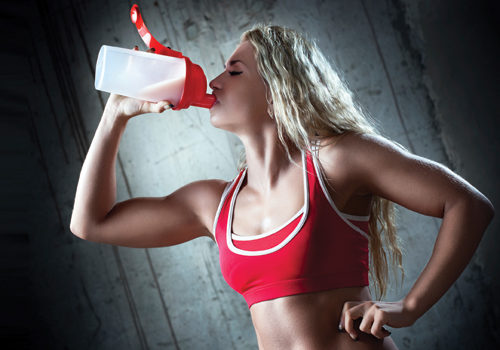
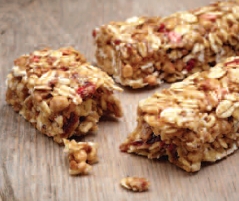 Factors that should be weighed above total calorie content in assessing energy bars include: proportions of macronutrients (protein, carbohydrates and fats), timing of consumption (mid-workout, midday, etc.) and availability of micronutrients (i.e., vitamins and minerals).
Factors that should be weighed above total calorie content in assessing energy bars include: proportions of macronutrients (protein, carbohydrates and fats), timing of consumption (mid-workout, midday, etc.) and availability of micronutrients (i.e., vitamins and minerals).









